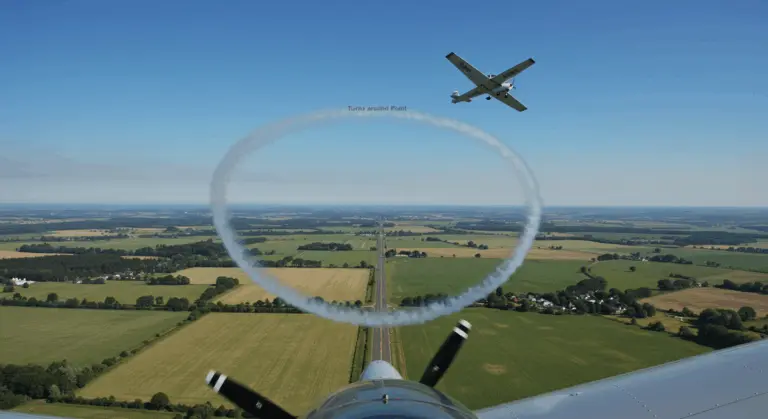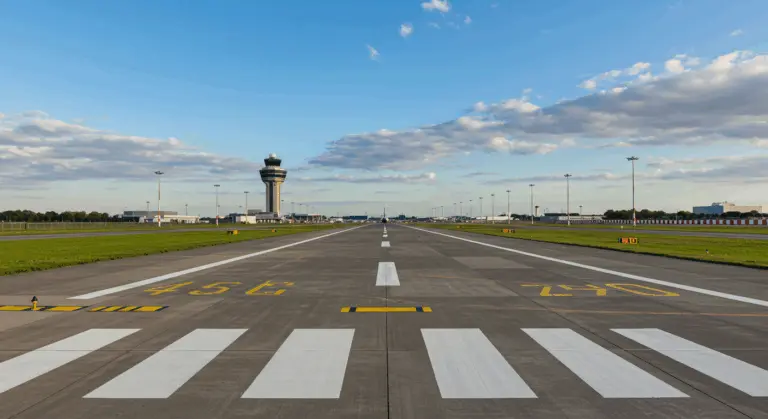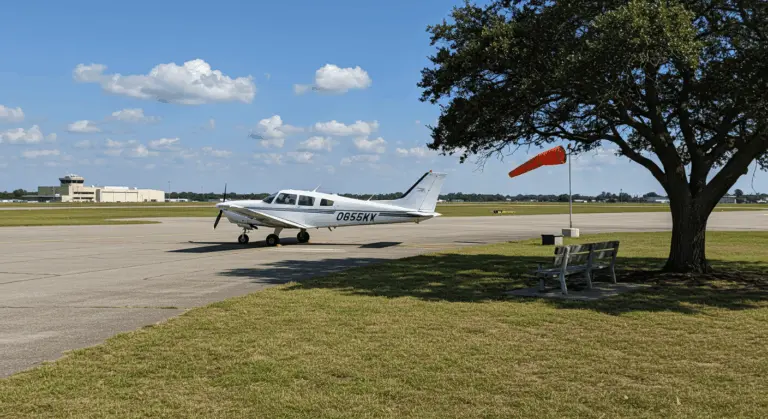IFR Clearance: Understanding Procedures and Requirements
What is IFR Clearance?
IFR clearance represents authorization from air traffic control (ATC) for an aircraft to operate under Instrument Flight Rules. This clearance is fundamental to aviation safety, ensuring separation from other aircraft and obstacles in controlled airspace—particularly when visibility deteriorates or visual references vanish.
Upon receiving an IFR clearance, pilots receive specific instructions requiring precise compliance. These instructions typically include the designated route, assigned altitude, and other critical parameters essential for safe navigation. One of the most important elements is the clearance limit—defining the furthest point an aircraft may venture without additional ATC guidance. This limit serves as a safety boundary, ensuring that pilots don’t proceed beyond a certain point without updated guidance from controllers.
Key Components of IFR Clearance – CRAFT
The CRAFT acronym provides a reliable memory aid for the five critical components of an IFR clearance. This standardized format enables pilots to systematically capture information from ATC:
Breaking clearances into these five components allows pilots to capture essential details effectively, even when workload intensifies. This systematic approach improves flight safety and operational efficiency and minimizing the risk of overlooking vital instructions.
Clearance Limit – What You Need to Know
The clearance limit establishes the furthest boundary where an aircraft may venture under its current IFR authorization. This critical boundary is typically your destination airport, but it can also be a specific fix or waypoint along your route. Understanding this limit is essential—it marks where current authorization expires, and additional ATC guidance becomes necessary.
When the clearance limit matches your destination airport, the situation remains straightforward. Yet when that limit falls short of your destination at a specific fix or waypoint, holding becomes mandatory. If the fix is the start of an instrument approach, you are expected to begin the approach upon arrival unless otherwise instructed. This situation often occurs in congested airspace or when ATC needs to manage traffic flow into busy terminal areas.
Always confirm your clearance limit understanding during ATC read backs. Any ambiguity regarding clearance boundaries demands immediate clarification. Planning for what happens at your clearance limit is a key aspect of IFR flight preparation, especially if that limit isn’t your intended destination.
Route Specifications in IFR Clearance
The route component provides specific navigation instructions your aircraft must follow. These instructions take different forms based on operational circumstances. If you’re receiving the most recent ATC clearance, it will typically include specific airways, fixes, or waypoints that define your route. In cases where ATC provides radar vectors, your clearance might simply state “direct to” a particular fix or waypoint once vectoring is complete.
Routes may appear as “expected routes” when ATC anticipates modifications but hasn’t finalized them. Alternatively, you might be cleared via your “filed route,” meaning you should follow the route exactly as submitted in your flight plan. Regardless of how your route is specified, it’s essential to have the appropriate charts and navigation resources available to follow it accurately.
How to Request IFR Clearance
When departing from an uncontrolled airport, pilots can obtain clearance through several methods:
-
Using a Ground Communications Outlet (GO) frequency (e.g., 121.725) to contact approach control.
-
Calling the phone number for the airport listed in the Chart Supplement.
-
Contacting Flight Service to have them relay the clearance from ATC.
Employ clear, concise phraseology when requesting clearance. For example, you might say: “Potomac Clearance, Cessna 9334H on the ground at Carroll County requesting IFR clearance to Allentown.” This provides essential information: aircraft identification, current position, and destination. After receiving your clearance, it’s essential to write it down using the CRAFT format before reading it back to ATC for confirmation.
Airborne pilots operating under VFR can also request IFR clearance. This is particularly helpful when weather deteriorates unexpectedly or navigation assistance becomes necessary around clouds, terrain, and obstacles. In these situations, contact the appropriate ATC facility by stating “[approach/center] + [call sign] + is at [location] with an IFR request,” then follow their instructions.
Always consult the Chart Supplement for available frequencies and phone numbers for clearance delivery. Preparation with multiple contact methods ensures clearance acquisition without unnecessary delays.
IFR Clearance Read back – Ensuring Accuracy
Read backs are important safety measures against pilot-controller misunderstandings. Pilots must read back key elements of an IFR clearance to confirm mutual understanding, including:
-
Altitude assignments
-
Heading vectors
-
Runway instructions
-
Speed restrictions
Aircraft identification in every read back remains essential—it confirms the correct aircraft received instructions. This practice becomes particularly crucial during busy periods with multiple aircraft sharing frequencies. By clearly stating your call sign at the beginning of your read back, you eliminate potential confusion about which aircraft is responding to the clearance.
Effective read backs require clear speech at moderate pace, especially for complex clearances. Uncertainty about any clearance element warrants immediate clarification using phrases like “Say again” or “Confirm…” It’s always better to verify information than to proceed with uncertainty. Remember that a proper read back is not just a procedural formality—it’s an essential safety practice that helps maintain the integrity of the air traffic system.
Standard Instrument Departure (SID) Procedures
Standard Instrument Departure (SID) procedures are published routes that streamline the transition from takeoff to en-route flight while ensuring obstacle clearance and traffic efficiency. SID’s are one of four general IFR departure categories:
-
Standard Instrument Departures (SID’s)
-
Obstacle Departure Procedures (Odds)
-
Diverse Departures
-
Radar Departures
Busy airports commonly employ SID’s, where standardized departure routes enable controllers to manage high traffic volumes very efficiently. These procedures include specific courses, altitudes, and waypoints that require precise pilot compliance. Unlike the more basic Odds, which focus primarily on obstacle clearance, SID’s often incorporate additional elements related to airspace structure, noise abatement, or traffic management considerations.
SID’s typically end at the initial fix, facility, or waypoint marking the en-route phase transition. This transition point marks where the departure phase ends and the en-route segment begins. Understanding this boundary is important for pilots to properly sequence their navigation and comply with any altitude or speed restrictions that may change at this transition point.
When SID’s are included in IFR clearances, you need appropriate chart availability and thorough pre-departure procedure review. Pay particular attention to any altitude restrictions, required climb gradients, and navigation equipment requirements. Some SID’s may require specific aircraft performance capabilities or navigation systems, so ensure your aircraft can comply with all aspects of the procedure before accepting the clearance.
Pre-Flight Planning for IFR Flights
Thorough pre-flight planning is the foundation of safe IFR operations. Proper IFR flight plans incorporate ATC-preferred routes, altitudes, and airways—ensuring separation from terrain, obstacles, and other aircraft.
Begin your planning by consulting comprehensive charts for departure and destination airports, including:
-
Approach plates
-
Departure procedures (SID’s/Odds)
-
En-route charts
-
Airport diagrams
Pay special attention to minimum safe altitudes and terrain along your route.
Checking Notums is an essential step that should never be overlooked. These notices provide important information about temporary procedural changes, facility outages, runway closures, and abnormal conditions potentially affecting your flight. Similarly, obtaining comprehensive weather briefings for your entire route is vital for IFR operations. This should include current conditions, forecasts, and any advisories or warnings that might impact your flight.
Preparation should include familiarization with destination airport visual approach slope indicators (VAST) or precision approach path indicators (PAPI). Though visual aids, they offer valuable backup information during instrument approaches—particularly when transitioning to visual conditions. Finally, minimize potential distractions in the cockpit by organizing your charts, setting up your navigation systems, and briefing any procedures before departure. Regular practice in various conditions will help build proficiency and confidence in your IFR skills, making actual IFR flights safer and less stressful.
Conclusion – Mastering IFR Clearance
Mastering IFR clearance procedures is a fundamental skill for instrument-rated pilots. Throughout this article, we’ve explored the critical components of IFR clearances, encapsulated by the CRAFT acronym—Clearance limit, Route, Altitude, Frequency, and Transponder code. This systematic framework ensures reliable instruction implementation from air traffic control, ensuring safe navigation through controlled airspace regardless of visibility constraints.
Clear ATC communication through proper read backs is essential for mutual understanding while preventing potentially hazardous misunderstandings. Careful clearance recording using CRAFT methodology, combined with strict condition adherence, maintains safe separation from aircraft and obstacles. This disciplined approach to clearance management is the cornerstone of safe IFR operations.
For pilots seeking to improve their skills, continuous practice and study are essential. Useful methods and resources include:
-
Using flight simulators to practice complex clearances.
-
Reviewing ATC communications from actual flights.
-
Regularly refreshing your knowledge of standard phraseology.
-
Studying FAA publications, instrument flying handbooks, and online training materials.
IFR clearance proficiency goes beyond regulatory compliance—it builds the foundation for safe, efficient instrument flying. Through comprehensive clearance procedure understanding and disciplined communication practices, pilots navigate confidently through challenging conditions while ensuring passenger and personal safety within the instrument flight rules system.







